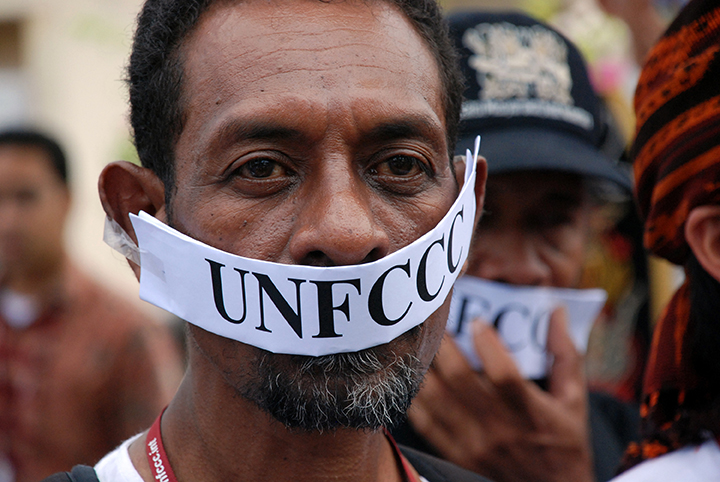On 21 November 2013 various non-governmental organizations walked out of the Warsaw climate talks. I am glad I have not attended for the last two years as I feel corporate interests have taken over the UN Climate Conference.
At this point I have no idea after the walk out if my photo exhibit was seized by UN security. I hope the photo exhibit was up long enough for the the High Level Ministers to view and see the reality of neoliberalism and climate chaos. They may have glanced, but unfortunately those with power did not really see or care. – Orin Langelle
 (This photo was scheduled for the exhibit, but because of increased UN pressure on criticism of the UNFCCC, the photo was not shown.)
(This photo was scheduled for the exhibit, but because of increased UN pressure on criticism of the UNFCCC, the photo was not shown.)
The exhibit included thirty photographs documenting Indigenous Peoples, organizations and social movements working for climate justice. The photographs were taken at events on six continents–from Bali, Indonesia to Espirito Santo, Brazil – Durban, South Africa and Chiapas, Mexico, to name a few.
All photographs by Orin Langelle. Courtesy Global Justice Ecology Project, Global Forest Coalition, and Langelle Photography.
Above: An Indigenous man with his mouth covered by a UNFCCC (United Nations Framework Convention on Climate Change) gag during a protest at the UN climate talks in Bali, Indonesia. The gag symbolized their systematic and forceful exclusion from a UN meeting with the UNFCCC Executive Secretary they were invited to the day before. It also symbolized and their exclusion from the official negotiations even though it is their lands that were being targeted for climate mitigation schemes.






